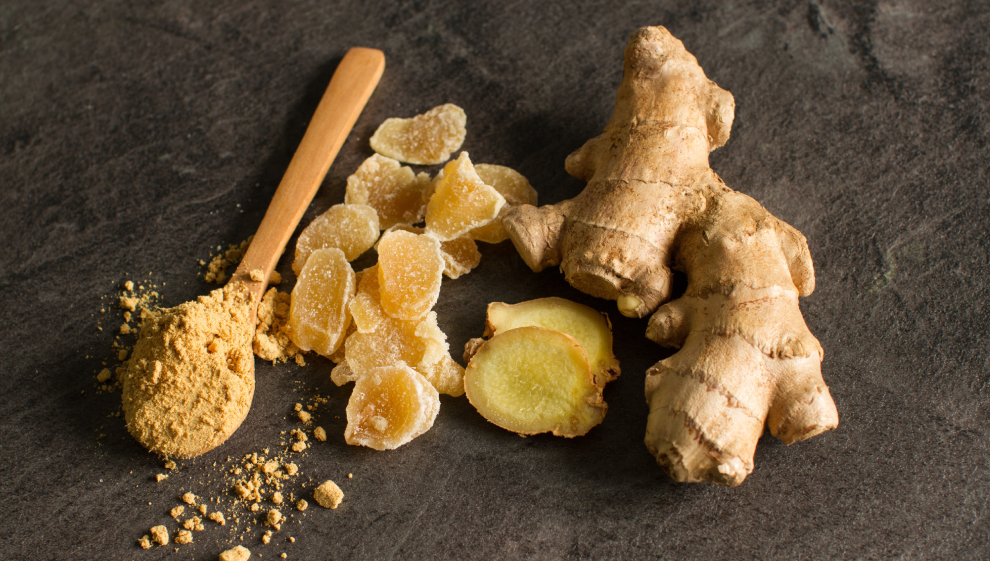Everything you should be eating if you have arthritis
To keep it simple, we’ve put all the information you need on how to build an arthritis-friendly diet in one place. Keep reading for tips and tricks and to learn more about why diet is so important for managing inflammation and arthritis.
The link between diet and arthritis

The short answer is that it’s all to do with inflammation. If we’re regularly consuming foods that have the capacity to cause high levels of inflammation, it’s likely we’ll see our symptoms flare up.
There’s also the fact that our diet and our weight are closely linked. If we’re eating healthily and avoiding junk food and takeaways, it’s going to be easier for us to maintain a healthy weight. If we’re overweight and inactive, we’re going to be putting our joints under a lot of unnecessary stress and pressure.
Lastly, vitamins and minerals like vitamin D and calcium are essential for developing strong bones and maintaining the health of our bones as we age. If our diet doesn’t include these essential building blocks, we’ll see additional strain placed on the joints because our musculoskeletal system isn’t as strong and developed as it perhaps could be.
Osteoarthritis and rheumatoid arthritis
Osteoarthritis
If you have osteoarthritis, the priority should always be eating foods that mean you are able to maintain a healthy body weight.
As previously mentioned, being overweight can increase the strain on your joints and storing too much fat can increase inflammation and make symptoms of osteoarthritis worse. There is strong evidence to suggest that losing weight can reduce pain and improve mobility in those with osteoarthritis.
Rheumatoid arthritis
With rheumatoid arthritis, there’s no strong evidence to suggest dietary changes can improve symptoms, however many people do report that eating certain foods can make their symptoms worse.
If you think this might be the case for you, it may be useful to try avoiding problematic foods for a few weeks to see if your symptoms improve. Keeping a food diary is a great way to do this. Start by logging what you eat and write whether your symptoms get better or worse in the next column. This is a great way to find foods that are potentially aggravating your condition.
The Mediterranean diet
You’ve probably heard about the Mediterranean diet if you’ve been reading nutritional advice.
The Mediterranean diet is based on the foods traditionally eaten in countries like Greece, Italy, and Spain that surround the Mediterranean Sea. This region's cuisine places an emphasis on fresh, whole foods and healthy fats, which have been linked to numerous health benefits. This includes things like:
- Minimally processed foods
- Fruits
- Vegetables
- Nuts
- Seeds
- Whole grains
- Olive oil
- Moderate consumption of fish, poultry, and dairy
- Limited intake of red meat and sweets
This diet is known for its anti-inflammatory properties and has been linked to numerous health benefits, including reduced risk of cardiovascular disease and improved arthritis symptoms.
Taking the fundamentals and adapting them to form a practical diet that works for you can go a long way to alleviating inflammation and reducing the symptoms of arthritis. The principles of the Mediterranean diet can also help form excellent building blocks to build our weight loss journey on.
1. Omega-3 fatty acids
Omega-3 fatty acids are well-known for their anti-inflammatory properties, making them an essential part of a diet designed to reduce arthritis symptoms.
Studies have shown that omega-3s can significantly decrease the production of inflammatory molecules such as cytokines and prostaglandins, which are involved in the inflammatory process of arthritis. By reducing inflammation, omega-3s help alleviate joint pain, stiffness, and swelling associated with arthritis, contributing to improved joint function and overall quality of life.
Examples of omega-3 rich foods:
- Fatty fish like salmon, mackerel, sardines, and trout
- Chia seeds are a great plant-based source of omega-3
- Flaxseeds that can be added to smoothies, oatmeal, or yogurt
- Walnuts are a handy snack that provides a good amount of omega-3s
- Hemp seeds are great for sprinkling on salads or incorporating into baking
Example meals and recipes
- Grilled salmon: marinate some salmon in olive oil, lemon juice, garlic, and dill, then grill until cooked through. Serve with a side of roasted vegetables or a fresh, leafy salad of your choosing
- Chia seed pudding: mix chia seeds with some almond or coconut milk and add a touch of honey. Let it sit overnight in the fridge before topping it with fresh berries in the morning
- A walnut and feta salad: toss some leafy greens with walnuts, feta cheese, and a simple vinaigrette made with olive oil and balsamic vinegar
- A flaxseed smoothie: blend a tablespoon of ground flaxseeds with spinach, banana, almond milk, and a handful of berries for a nutritious start to your day
- Hemp seed and avocado on toast: spread mashed avocado on some whole-grain toast and sprinkle with hemp seeds, salt, and pepper.
Why omega-3s are so important if you have arthritis
Omega-3 fatty acids help reduce the production of inflammatory molecules and enzymes that can be problematic for our joints. They also play a role in maintaining cell membrane health and promoting better overall cardiovascular health which is often a concern for individuals with chronic conditions like arthritis.
2. Antioxidant-rich foods
Antioxidants protect the body from oxidative stress (where there is an imbalance of harmful molecules and antioxidants in the body) which can lead to cellular damage and the development of various diseases like arthritis.
Examples of antioxidant-rich foods:
- Berries like blueberries, strawberries, raspberries, and blackberries
- Leafy greens like Spinach, kale, and Swiss chard
- Nuts and seeds like almonds, sunflower seeds, and pecans
- Fruits like oranges, grapes, and pomegranates
- Vegetables like bell peppers, carrots, and sweet potatoes
Example meals and recipes
- Berry smoothie bowl: make a smoothie mix out of your favourite berries, with a banana thrown in there alongside a splash of almond milk. Pour the mix into a bowl and top with granola, chia seeds, and a few fresh berries for a nutrient-packed breakfast
- Spinach and kale salad: combine fresh spinach and kale with sliced almonds, pomegranate seeds, and a light vinaigrette for an antioxidant-rich salad that’s refreshing in summer
- Roasted vegetables: cut sweet potatoes and red/green peppers into chunks and toss them with olive oil, salt, and pepper. Roast until tender and serve as a side dish or add the mix to salads or grain bowls
- Stuffed peppers: halve 3/4 peppers and fill them with a mixture of quinoa, black beans, corn, tomatoes, and spices. Bake until the peppers are tender and serve with a side salad of leafy greens and an olive oil dressing.
Why antioxidants are so important if you have arthritis
Antioxidants like vitamins C and E, beta-carotene, and polyphenols help us combat oxidative stress, which can damage joint tissues and worsen arthritis symptoms. By reducing this damage, antioxidants help preserve the health of our joints and reduce inflammation as we age.
3. Anti-inflammatory herbs and spices
Herbs and spices can be added to any meal to enhance flavour, and certain options contain bioactive compounds that reduce inflammation and lower oxidative stress in the body.

Examples of anti-inflammatory herbs and spices
- Turmeric contains curcumin which is a potent anti-inflammatory compound
- Ginger is known for its anti-inflammatory and antioxidant properties
- Garlic can help reduce inflammation and boost our overall immune system
- Cinnamon contains antioxidants to help fight inflammation
- Rosemary has anti-inflammatory compounds that could benefit joint health
Example meals and recipes
- Golden turmeric milk: heat some almond milk in the microwave before adding turmeric, ginger, cinnamon, and a touch of honey to form a warm and soothing anti-inflammatory drink
- Ginger tea: soak some fresh ginger slices in hot water and add a bit of honey and lemon for another anti-inflammatory option
- Garlic roasted vegetables: toss your favourite vegetables with olive oil, minced garlic, salt, and pepper, then roast on a tray until they’re tender
- Cinnamon-spiced oatmeal: cook oats with a sprinkle of cinnamon and top with fresh fruit and nuts for a warming and nutritious breakfast
- Rosemary chicken: marinate chicken breasts in a mix of olive oil, garlic, rosemary, and lemon juice, then bake or grill until cooked through.
Why anti-inflammatory herbs and spices are so important if you have arthritis
Spices like turmeric and ginger contain active compounds that inhibit inflammatory pathways in the body. Curcumin in turmeric, for example, has been shown to suppress inflammatory cytokines and enzymes involved in arthritis.
They not only add flavour to meals, but also help reduce joint pain and stiffness, making them a valuable addition to an arthritis-friendly diet.
4. Fibre-rich foods
High-fibre foods are crucial for maintaining overall health and making sure our digestive system is working as it should. They can also help reduce the inflammation associated with arthritis.
Dietary fibre supports a healthy gut microbiome, which plays a significant role in how our body responds to the presence of inflammation. A diet rich in fibre can help lower C-reactive protein (CRP) levels which are a marker of inflammation in the body.
Examples of fibre-rich foods
- Whole grains like brown rice, quinoa, and whole wheat
- Legumes like lentils, chickpeas, and black beans
- Fruits like apples, pears, and berries
- Vegetables like broccoli, carrots, and Brussels sprouts
- Nuts and seeds like almonds, flaxseeds, and chia seeds
Example meals and recipes
- Quinoa salad: cook some quinoa and combine it with chopped vegetables, beans, and a light dressing for a light, fibre-rich meal
- Lentil soup: boil some lentils and serve them with carrots, celery, onions, and tomatoes for a hearty and nutritious soup
- Baked apples: core apples and fill them with a mixture of oats, cinnamon, and a bit of honey, then bake until tender for a healthy dessert
- Veggie stir-fry: stir-fry a mix of your favourite vegetables with tofu or chicken and serve over brown rice for a fibre-packed meal
- Chia seed yogurt parfait: layer chia seeds with Greek yogurt and fresh fruit for a delicious and fibre-rich breakfast or snack.
Why fibre is so important if you have arthritis
Dietary fibre helps lower levels of CRP in the body. These are inflammation markers that are often elevated in people with arthritis.
A healthy gut microbiome that’s supported by a high-fibre diet can reduce inflammation and aid with weight management. This helps reduce the stress on weight-bearing joints and alleviate arthritis symptoms.
Last updated Thursday 12 September 2024
First published on Thursday 12 September 2024

